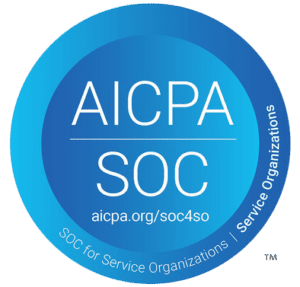In this post, we explore how passive and planning-focused advisors can leverage benchmarking and performance reporting to improve their firm’s operations.
As an advisor, you want to spend your time focused on doing what you do best: working with clients. However, day-to-day back-office work like performance reporting and benchmarking can eat up much of your time.
In fact, for some advisors these processes have become so time consuming they’ve opted to forgo them altogether. This premise has sparked an ongoing debate in the industry over reporting and benchmarking, and if it’s even really necessary. Two key factors have fueled this debate:
- The rise of low-cost index investing and other forms of passive investment management has changed the role performance plays in client conversations.
- Shaken trust in advisors in the wake of the Financial Crisis leading many investors to question the value of their relationship in the first place.
Here at Bridge, we strongly believe in the value of portfolio accounting to investors. Even for firms not focused on “beating the benchmark”—a thoughtful reporting and benchmarking process provides many benefits including:
- Increased transparency
- Increased accountability
- Improved context and understanding for clients
These areas, particularly the first two, can easily be overlooked but are critical to your firm’s long-term success.
Using Portfolio Accounting to Increase Transparency
In light of increasing mistrust around the financial industry, bolstering transparency at your firm has become critically important. In today’s day-and-age, investors of all sizes are demanding increased insight into their assets. Proper portfolio accounting is the most effective way to increase visibility across client assets. Beyond this, using the correct calculation methodology during your reporting process is crucial to giving your client apples-to-apples comparisons.
Using Portfolio Accounting to Increase Accountability
There are several ways you can leverage portfolio accounting to increase accountability within your firm. One example of a situation in which accountability is crucial is when dealing with projection of retirement assets. Because these projections have an assumed rate of returns, instilling accountability throughout the process can help keep your client-advisor relationship strong.
Correctly setting expectations, followed by consistent communication around those goals and necessary returns are crucial to a stable, prosperous client relations. Leveraging benchmarking and reporting can help facilitate conversations about performance returns. Even if you aren’t trying to beat the market, you can use discussions around performance returns and benchmarks to help your clients better understand what you are (and are not) doing for them. In this sense, accountability means consistently making sure that you and your client are in sync working towards their goals.
Time-Weighted-Returns
The many benefits high-quality benchmarking and performance reporting bring to advisors is at the heart of why we do what we do here at Bridge. In support of more transparent and accountable client-advisor relationships, we use the Time-Weighted-Returns method. This calculation methodology takes a bit more work, but it’s the same type of calculation methodology as the highest industry standard, Global Investment Performance Standards (GIPS). The TWR methodology is ideal because it is the most consistent way to provide returns that are easily comparable to appropriate benchmarks, without client cashflows skewing the numbers. A TWR-driven reporting process is key to any effective benchmarking strategy.
Key Takeaways
Here are some clear takeaways for leveraging these concepts in your firm:
- Use a reporting tool that calculates TWRs, giving you a defensible, transparent number to start with.
- Create appropriate benchmarks that are in line with the clients actual allocation, or use more than one benchmark simultaneously to illustrate the variability of returns (e.g. S&P 500 and a US Aggregate Bond Index).
- Consider using investable benchmarks, a rising (and positive) trend in reporting that is often easier for clients to understand than an abstract index.
- Start client conversations about returns early on in the relationship. Focus on setting expectations around the variability and appropriateness of returns, regardless of risk profile.
- Whenever possible align conversations about returns with long term planning.
At the end of the day, many clients just care about answering one simple question: Am I okay? Leveraging a transparent and efficient reporting solution can help you easily address your client’s concerns, leaving you both feeling more confident.
Schedule a Demo to Learn More
Interested in learning how Bridge can help automate your back-office operations including performance reporting, billing, trading, and rebalancing? Schedule a demo today to learn more.


